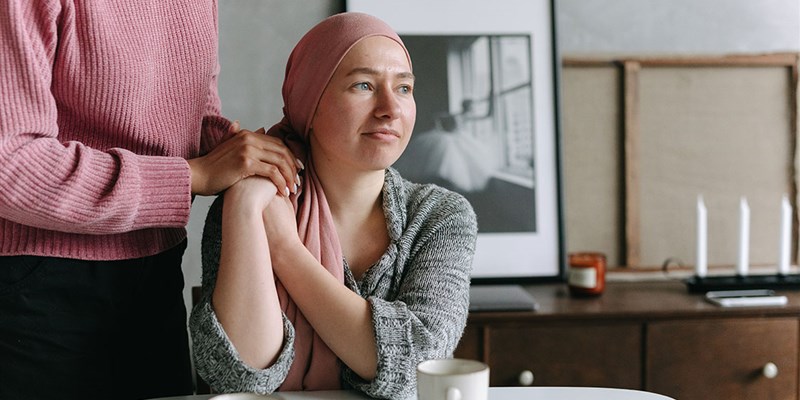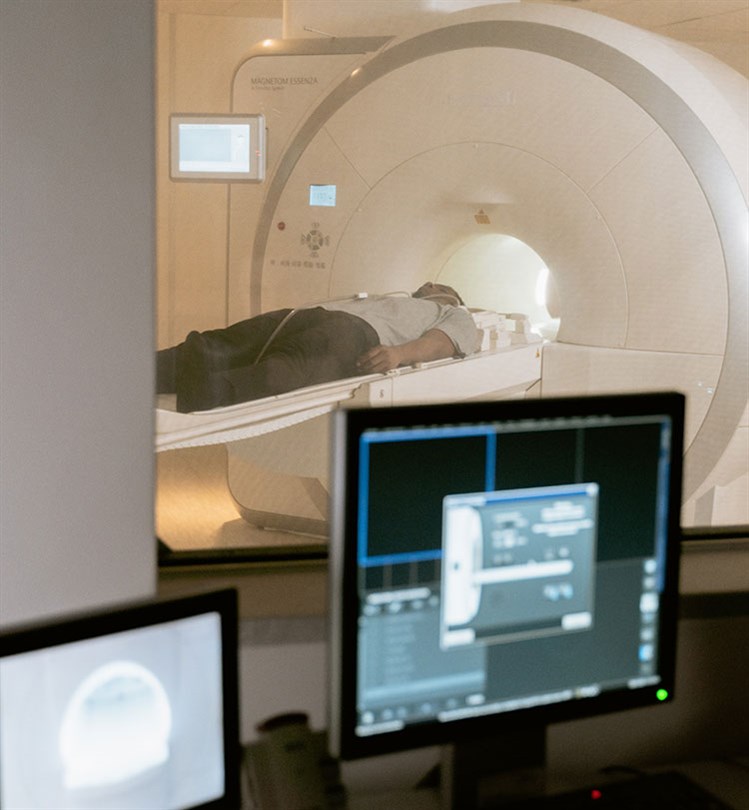
July is sarcoma awareness month, notes our information development nurse, Sue Green. But what exactly is a sarcoma? And what do you need to be aware of with this type of cancer?
What is sarcoma?
Sarcomas are rare cancers of the supporting tissues of the body. These include bone, muscle, nerves and blood vessels. They are grouped into two main types:
Primary bone cancer – sometimes called a bone sarcoma - is different to secondary bone cancer. Secondary bone cancer is a lot more common than primary bone cancer and is treated very differently.
There are different types of primary bone cancer. These include osteosarcoma, chondrosarcoma, Ewing sarcoma and chordoma.
There are also different types of soft tissue sarcoma, including leiomyosarcoma, rhabdomyosarcoma, gastrointestinal stromal sarcoma (GIST) and Kaposi’s sarcoma.
Who can get a sarcoma?
People of any age can develop a sarcoma.
Some types of primary bone cancer are more common in teenagers and young adults.
Some types of soft tissue sarcoma can affect children, teenagers, and young adults. But they are more common in older people.
What symptoms should I be aware of?
Because sarcomas affect tissues that occur throughout the body, symptoms can occur anywhere in the body. However, many start in the bones or soft tissues of the arms or legs.
The main symptoms of a bone sarcoma are a pain that you may feel at night and might get worse after or during exercise. There may also be swelling in the area. It can also cause reduced movement in the affected limb or sometimes a broken bone.
The main symptom of a soft tissue sarcoma is a lump or swelling that is getting bigger, is larger than 5 cm (2in), and feels painful or tender.
How is a sarcoma treated?
Sarcomas are rare, so anyone diagnosed with a sarcoma should be treated in a specialist sarcoma unit.
 Treatment will depend on the type of sarcoma, how big it is and where it is in the body. Many sarcomas are treated with an operation to remove the tumour. You can read more about surgery for bone sarcomas and soft tissue sarcomas. Some people may have treatment with chemotherapy or radiotherapy before the operation. Often further treatment is given after the operation to help reduce the chance of the tumour returning.
Treatment will depend on the type of sarcoma, how big it is and where it is in the body. Many sarcomas are treated with an operation to remove the tumour. You can read more about surgery for bone sarcomas and soft tissue sarcomas. Some people may have treatment with chemotherapy or radiotherapy before the operation. Often further treatment is given after the operation to help reduce the chance of the tumour returning.
Surgery for a sarcoma sometimes means having a major operation. This may affect how that area of the body works or how it looks. If a limb is affected, occasionally, the limb or part of the limb needs to be removed (amputation). This can have a huge impact on someone’s life, but there is support and help available to help people adapt.
Your feelings
Being diagnosed with cancer can greatly impact a person’s life and emotions. This can be even greater if treatment has meant a change to a person’s appearance and how a part of their body works. We have information to help people who are coping with a change to their body image. We also have information about the emotional effects of cancer.
Where can I get more information and support?
We have lots of information on our website about sarcomas. And we have booklets about primary bone cancer and soft tissue sarcoma. You can also talk to one of our advisers on the Macmillan Support Line - ring 0808 800 00 00 - from 8 am to 8 pm, seven days a week.
Sarcoma UK can also provide information and support.
Whatever cancer throws your way, we’re right there with you.
We’re here to provide physical, financial and emotional support.
© Macmillan Cancer Support 2025 © Macmillan Cancer Support, registered charity in England and Wales (261017), Scotland (SC039907) and the Isle of Man (604). Also operating in Northern Ireland. A company limited by guarantee, registered in England and Wales company number 2400969. Isle of Man company number 4694F. Registered office: 3rd Floor, Bronze Building, The Forge, 105 Sumner Street, London, SE1 9HZ. VAT no: 668265007